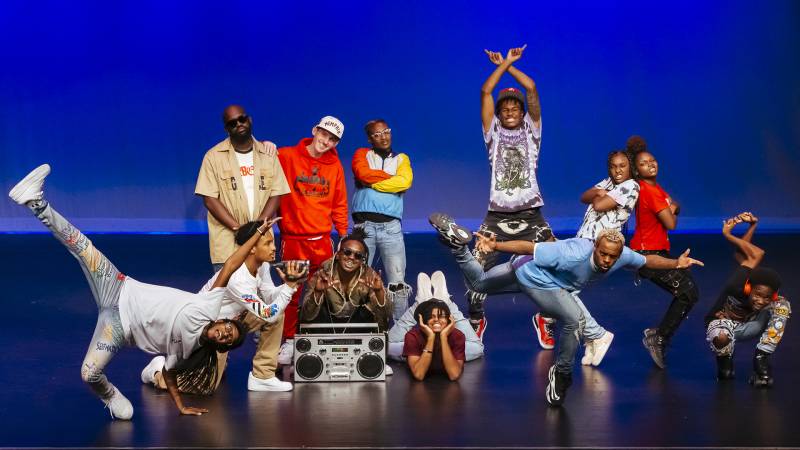“I’ve experienced releasing my trauma through dance with different styles,” he says. “In ballet, when you learn a choreography you’re learning someone else’s movement. There’s a right way and a wrong way. With Memphis jookin’ you have that freedom and can use that as a platform for your trauma or joy, and that’s a very powerful thing.”
Lil Buck has covered a lot of ground in his career. He spent two years studying ballet via a scholarship at Memphis’s New Ballet Ensemble, co-choreographed Janelle Monáe’s music video for “Tightrope,” toured with Madonna and starred in the Cirque du Soleil show Michael Jackson: One. His breakthrough moment came in 2011 via the ballet connection, when an informal video shot by director Spike Jonze captured cellist Yo-Yo Ma playing Saint-Saëns’s “Le Cygne” as Lil Buck freestyled “The Dying Swan,” a dance inspired by Mikhail Fokin’s solo for legendary Russian ballerina Anna Pavlova.
Posted to YouTube, the video went viral, accruing millions of views, and suddenly Lil Buck and Memphis jookin’ became part of the larger street dance lexicon alongside Oakland’s turfing, Chicago footwork and other idioms explored by KQED’s award-winning If Cities Could Dance video series. Dr. Rico and co-choreographer Terran Noir Gary had been thinking about creating a Memphis jookin’ showcase for years, and when the pieces started falling into place with the Orpheum Theatre Group as co-producers, they didn’t let the pandemic kill their momentum.
While it’s a Broadway-style dance show, Memphis Jookin’ came together with far less development time than a Great White Way production. Due to the pandemic, the creative team wasn’t working together in the same space throughout much of the initial planning. For the auditions, they weren’t looking only for spectacular dancers who could execute a time-defying slide.
“Not every street dancer can learn and perform dances created by someone else,” Campion says.
Beyond choreographing the show, Dr. Rico has concentrated on melding the dancers into a crew. Given the distilled nature of the style, which strips movement down to an emotional essence, it’s not surprising to find out that he starts every rehearsal with group meditation. He believes that before dancers can communicate effectively with each other (and audiences), they need to connect with themselves.
“The idea of meditation was teaching them to be present in the moment,” Dr. Rico says. “None of the moves matter more than the intention, the ‘why?’ As a collective, we figured out a way to balance it all, and not exclude tough moments. Aesthetically, the grooves are really based on musical notes related to music’s time signature and how you feel the staccato or legato motion. The choreography is needed, but to keep innovation you have to tap into right now. When we get there, we know it. Let them ride that! We know when we get in that zone.”
Memphis jookin’ is culturally adjacent to a plethora of street dance idioms that have emerged in Black communities across the country. Beyond the deep ties to hip-hop, the styles similarly celebrate freestyle improvisation. The street dance scene seems to thrive on camaraderie. Lil Buck was quick to praise dancers he’s encountered in Oakland over the years.


